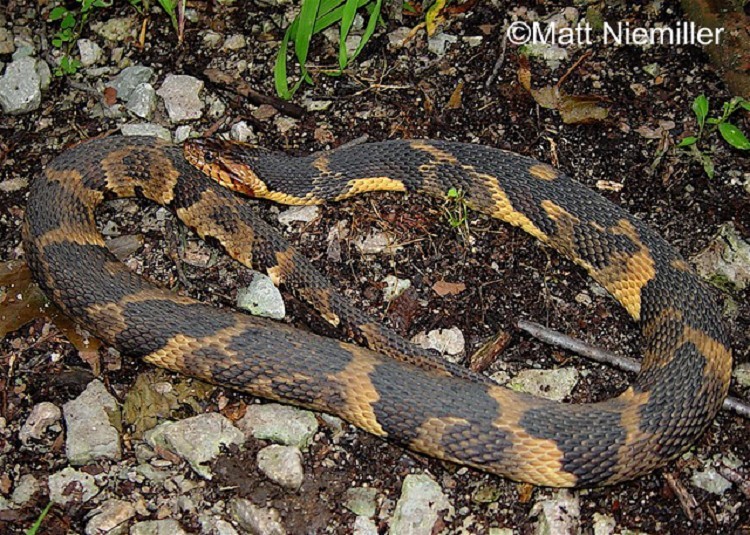Southern Watersnake
One subspecies, Broad-banded Watersnake (N. f. confluens), occurs at Reelfoot Lake and in counties that border the Mississippi River.
Description: A medium-sized, semi-aquatic snake (22.0 to 36.0 inches in length) with broad brown, red-brown, or black crossbands separated by yellow to grayish bands. Variations in band color occur across its range.
The belly is yellow patterned with bold, square, black markings. A faint black line runs from the corner of the eye diagonally to the corner of the mouth. Young are more brightly colored.
Similar Species: Cottonmouths are darker and more heavy-bodied with a facial pit between the eye and nostril.
Habitat: Prefers cypress swamps, marshes, river sloughs, and shallow lakes. Frequently found among thick vegetation, basking on logs, or on branches overhanging water.
Diet: Primarily fish, frogs, toads, and tadpoles; occasionally salamanders and crayfish.
Breeding information: Courtship and mating occur in spring. Females give live birth to 7-40 brightly colored young during the summer.
Status in Tennessee: Common at Reelfoot Lake; populations appear to be stable. However, many watersnakes are persecuted by humans who mistake them for Cottonmouths.
Fun Facts:
- Often called “yellow moccasin” and “pink flamingo snake” by locals due to the rich color variations that the Southern Watersnake exhibits.
Best places to see in Tennessee: Basking on logs or along the edges of Reelfoot Lake.
